I absolutely love teaching writing. And sharing my enthusiasm for writing with my students generally gets 90% of them “on board.” They look forward to writing time and are engaged in their work.
However…there’s still that other 10%. That 10% may consist of kids who dislike writing, find writing difficult, or struggle for some other reason. So when enthusiasm isn’t enough, how do we help those students? Today’s blog post has 7 suggestions!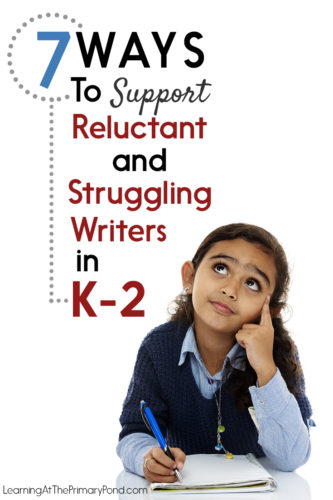
Photo Credit: Mido Sensen, Shutterstock
1. Provide time for drawing and talking.
The vast majority of our students are able to communicate ideas in some way, even if they don’t feel confident as writers. Drawing and talking are both ways of communicating ideas, and they can feel less “scary” than writing ideas down on paper. Moreover, developmentally speaking, drawing and talking are both important precursors to writing.
Drawing and talking about a topic first can help our kids get ready to write about the topic. I build in opportunities for kids to do so throughout writing workshop – this is not just a strategy reserved for struggling writers. Here are some ways that I build this in:
- Turn and talk during a writing minilesson
- Shared writing (students talk and work together to come up with a story or other piece of writing, and I record their ideas)
- Elbow partner talks before beginning to write (I have them talk to a partner when they’re already sitting down with their writing folders out, so that they can immediately write down their thoughts afterward, without having to move or transition. Often, I say, “Take out your writing piece, and read it to yourself. Then, tell your partner what you plan to write next.”)
- Dedicated drawing time (I invite them to draw for 3-5 minutes and then ask them to wrap it up and begin writing at that time – or talk to a partner about what they drew, before beginning to write.)
However you choose to build in drawing and talking time, make it consistent. I think kids should have opportunities to draw and talk just about every day during writing time. It only takes a few minutes, but it’s a great way to get them started on their work.
2. Teach them to solve problems independently.
Struggling writers often believe that they need teacher help to be successful with their writing. We need to show them how to rely on themselves, not on us! This will a) build their confidence and b) free us up to work with all of our students.
The language we use with our students makes a big difference in how independently they work. Here are a few examples of things I say to help build independence in my writers:
- How are you going to figure out how to spell ______?
- How will you come up with a topic?
- What could you try in order to solve this problem?
- Where might you find those materials?
Of course, in order for kids to successfully answer those questions, they have to have learned how to solve these problems. Minilessons (throughout the year, not just at the beginning!) and anchor charts can teach kids to figure out what they should do if they run out of paper, how to figure out how to spell a word, and so on.
Our struggling writers may need us to release independence to them more slowly than we do with our other learners. We may not be able to get them solving all their problems independently, but if they can master one problem per week, then it’s progress!
3. Help them understand that they are part of a writing community.
Again, this is something that I want for all my writers – but especially for those who struggle. I’ll talk more about this in the next section, but writing celebrations are a great way to build community.
Implementing a revising and editing table in my classroom has also helped build community. The revising and editing table is a dedicated space where kids go to revise and edit with a partner. They LOVE working together and helping each other! Getting to work with a friend motivates even my most reluctant writers to actually finish a draft so they can go to the table. You can read more about the revising and editing table HERE.
Shared writing and the language experience approach (LEA) are additional activities that can help build a writing community in your classroom. In both of these instructional practices, kids work together to compose a piece. The “hard work” is done by you – polishing up what they want to say and getting it down on paper. This is an opportunity for your students to have fun together around writing – maybe they compose a silly piece, or share memories of a special field trip. You can also do these activities in a small group setting, which can be especially helpful for your struggling writers.
4. Emphasize writing celebrations.
Writing celebrations are great for building community! And, as Leah Mermelstein points out in her book Self-Directed Writers, celebrations are great for motivating reluctant or struggling writers because they create an authentic deadline.
Here’s how I use celebrations to motivate my kids:
- I plan out 1-2 celebrations for every writing unit. My Kindergarten units tend to be a bit shorter, so we may just have one at the end. But my first and second grade units are a little longer, so we have a mid-unit celebration. This ensures that the celebration isn’t too far off to seem real or important to the kids.
- I choose an authentic audience and make a plan for each celebration. We can invite parents in and have the kids read their work in small groups while the families listen in. We can write books for “publication” in our classroom library or the school library. We can read our work to older or younger students. We can write letters to the principal, mayor, or other public figure and have a mailing party. The options are endless! And honestly, you don’t have to make your celebration elaborate – mine never are! Sometimes it’s as simple as buying pretzels for the kids to snack on while they listen to their friends read (this also keeps them quiet, ha!). The celebration doesn’t have to be fancy, as long as you get your kids excited about it.
- When I introduce the unit, I start talking about the celebration right away. I want my students to understand that they are writing for a real purpose and a real audience. Even when kids will be writing lots of different pieces (and not just the one they will share during the celebration), I tell them that this is all part of “getting ready” for the party. I encourage them to do their best work so that they will be able to choose one awesome piece to polish up for the celebration. Sometimes I get them involved in planning the celebration – this can be super motivating, too!
- As the celebration draws nearer, we mark the date on the calendar and talk about the importance of being ready for the celebration. This is when I start getting a little dramatic. 😉 During writing time, if a child is off task, I say something like, “Oh, no! I’m worried you won’t be ready for our writing celebration if you’re talking to Kim! You’d better get back to work.” As Leah Mermelstein points out, adult writers (like us!) respond to deadlines, and kids do too. We may have to give our struggling writers a little more help and time to get ready, but having a genuine deadline to work toward is quite motivating.
5. Provide them with appropriate supports.
No matter how excited they may be about a writing celebration, our struggling and reluctant writers might never finish a piece if they don’t have the appropriate supports. I went more in-depth on tools for differentiating writing instruction in this post, but here are some tangible things we can give our students to serve as writing supports:
- Word banks
- Self-assessment checklists or rubrics
- Sentence starters
- Writing paper with fewer lines
- Personal spelling dictionaries
- Alphabet and sound charts
- Editing checklists
Again, check out that post for more details (you can also get some free writing supports HERE!). Just remember that most supports you use should be temporary. We’re not doing our writers any favors if we lead them to believe that they can’t write without these scaffolds. We can remove (or at least lessen) the supports as the school year goes on.
Oh – and if a student physically struggles with writing, that’s a whole other ballgame. In her book A Quick Guide To Reaching Struggling Writers, Colleen Cruz recommends that, if a child complains that his/her hand hurts, we check to see if the child is holding the pencil correctly or gripping too hard, check the child’s posture, try putting the paper on an angle (on top of a binder, for example), provide soft pencil grips, or give the child a mechanical pencil to use if they are pressing down too hard. These are great ideas, and I would also add that you can check with your occupational therapist (OT) for more help.
6. Help them set and achieve small goals.
If you ask students to write 3-page stories, but your struggling writers can’t even get one word on the page, that goal is going to seem insurmountable to them. (It would be like asking you to climb Mount Everest if you don’t even know how to use climbing gear!)
We can help our struggling writers set and achieve smaller goals so that they can still experience success.
At first, I initiate the goal setting by taking one of my writers to the side before writing time. I say something like, “Try to write three labels on your picture today. You can use your spelling chart to get help with the sounds. I’ll check with you afterward to see if you met your goal!”
When I first introduce goals, I make them something that I know the student is going to accomplish. Then, I “up the ante” and encourage the student to begin sitting goals for him or herself. You can even make it a classwide routine (just teach students not to compare goals, so that your struggling writers don’t end up feeling insufficient).
And if a student doesn’t meet a goal one day? No big deal! Talk to your kids about what they can do if they don’t meet a goal (i.e. try to meet it the following day, think about how they might improve, etc.).
7. Provide opportunities for them to help other writers.
I love this suggestion from A Quick Guide To Reaching Struggling Writers! Cruz suggests that we pair up our struggling writers with a younger writing buddy from a different class. When students feel that they can teach or help someone else with writing, that goes a long way towards building confidence!
I’d also add that struggling writers can still help friends in their own classroom – even if those friends are more skilled writers. A struggling writer can serve as a table leader for getting out supplies, show a friend how to draw something, or share a strategy that worked well for him. I want my kids to understand that we all have something to contribute, and that we can all learn from each other.
Conclusions
You might have noticed that many of these suggestions for struggling or reluctant writers are actually whole class supports. I believe that the easiest way to help our lower writers is just to build these practices into our regular writing instruction. And really, all kids benefit from the majority of these strategies!
Is there anything you’d add to this list? Leave a comment below – I’d love to hear from you!
References
Cruz, M. C. (2008). A Quick Guide to Reaching Struggling Writers. Portsmouth, NH: Heinemann.
Mermelstein, L. (2013). Self-Directed Writers. Portsmouth, NH: Heinemann.



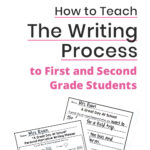
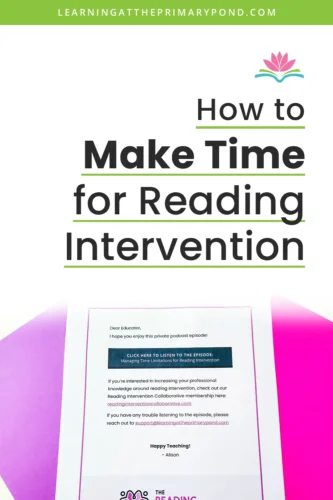
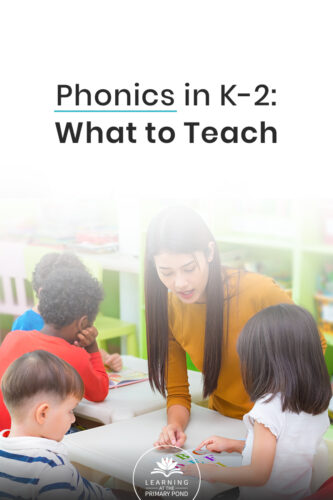
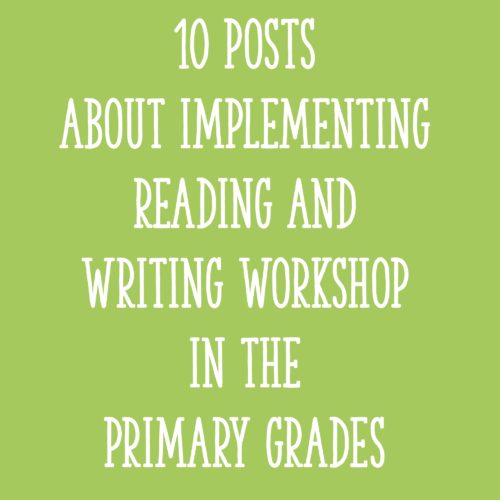






I love all the suggestions you provide for struggling writers. Thank you
Thank you for all your suggestions and if we give some motor skill development activities to our KG section that will help us.That is play with dough,lacing activities,maze puzzles etc…
The free download for the K-2 writing folder will not download.
How can this be fixed?
Hi! Did you receive the freebie via email? If so, please respond back to that email and we’ll take care of it. 🙂